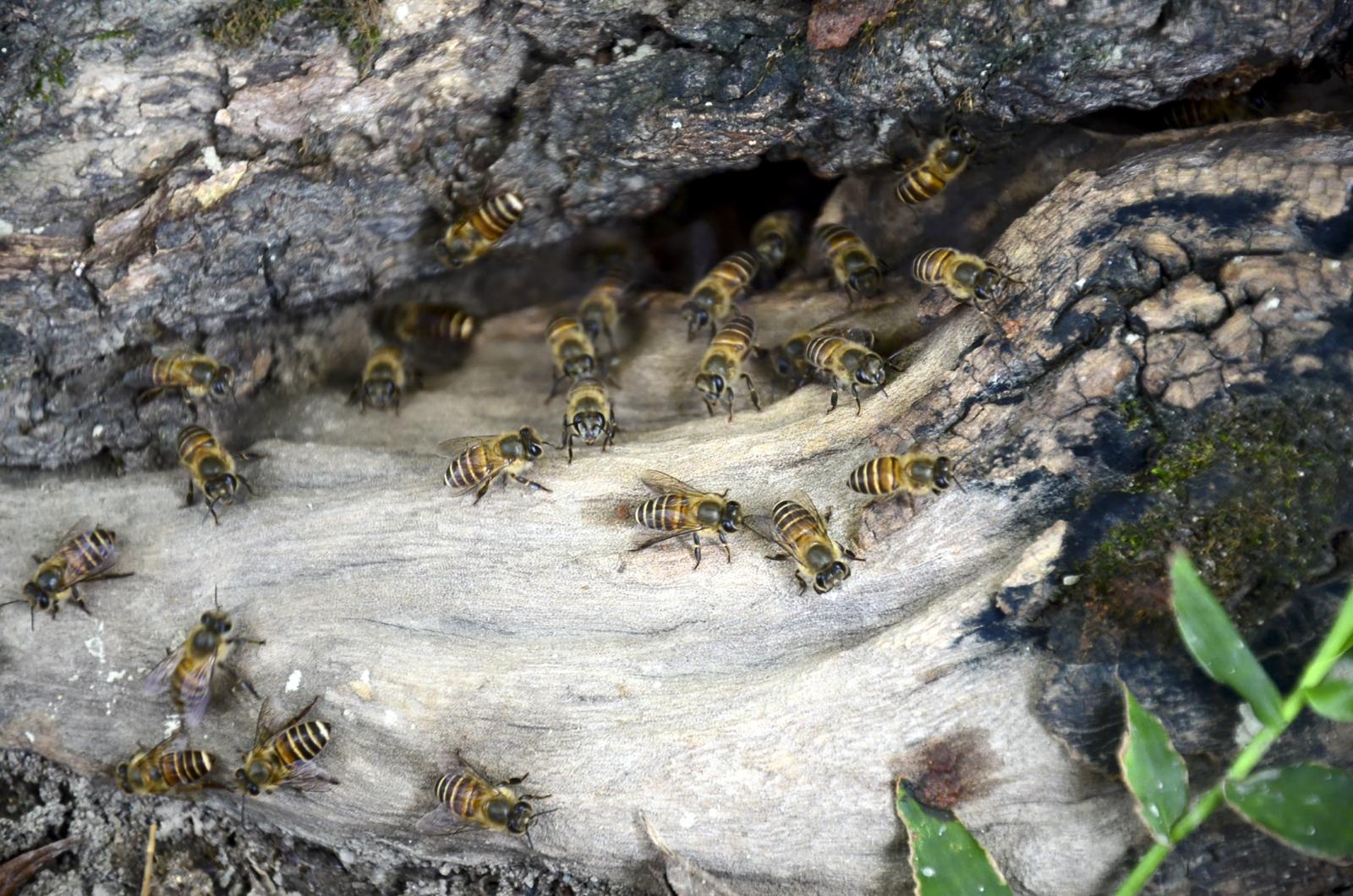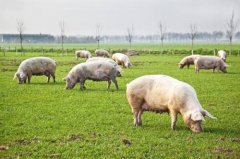How do bees collect honey? How do bees collect honey?
With the rise of the trend of health preservation, eating natural honey has become a trend all over the world, but people only know a thing or two about honey and honeybee ecology. Wu Shu-hui, an assistant researcher in the botanical garden group of the Lin Experimental Institute, who is in charge of the exhibition, says that many people like to eat honey, but they don't know how honey comes from. In fact, there are many sources of honey around you and me. I hope that through the exhibition, let people know where the food in their mouth comes from and how bees collect honey.
Longan honey and litchi honey are not rare. Have you ever seen water pen honey and white thousand-layer honey? The Taipei Botanical Garden of the Forestry Research Institute, in cooperation with a number of bee farmers, has collected more than a dozen kinds of honey from all over Taiwan at different times, many of which come from common plants around you and me, such as street trees, white honey, as its name suggests, thick and white, and the honey of coastal plant fountain pen is dark brown. "buzzing Sen: the Sweet betrothal Gift of the Forest" is now on display at Nanmending 323 in the Taipei Botanical Garden, inviting people to celebrate the New year sweetly.

Both street trees and coastal plants can collect honey.
Walking into the exhibition site of "buzzing Sen: the Sweet betrothal Gift of the Forest", the face-to-face is more than a dozen honey hanging in mid-air and filled with transparent test tubes, with pen honey, white honey and Jiang honey written on the label. And so on, people are familiar with plants, parks, street trees, suburban mountains, seaside can see their traces.
The color and taste of honey are different in different seasons, places and plants, which also reflects the impact of seasonal changes on honeybee ecology. For example, in the white layer planted in the botanical garden, the honey produced is not amber, but thick white, which is obviously precipitated in the test tube; Pu Jiang honey is particularly eye-catching, showing a dark brown color with a light fragrance; there are few flowering plants in winter, and the common "Jiangmou" in shallow mountains and exotic species of large flowers and salty grass have become a minority choice for bees.
From the color of pollen, we can see the change of seasons.
In addition to honey, the exhibition also specially sets the pollen color of the same area and different seasons, as well as the changes of large flower salty grass pollen from October 29 to December 3, from yellow, orange to red, brown, and so on. it can be seen the environmental differences in different regions.
The pollen of salty and abundant grass in different seasons has different colors, showing environmental differences.
For example, the Dongshan workstation of the Forestry Bureau collected pollen within a radius of three kilometers on May 21, 24, 31, June 14, 28 and so on. Careful observation shows that the pollen on May 31 is particularly dark. Wu Shu-hui explains that it is possible that Acacia trees bloom at this time. The pollen of Acacia trees is darker, and bees are attracted by the flowers of Acacia trees to collect honey.
Pollen is also specially heated in the exhibition hall, so that people can personally smell the pollen of salty rich grass with large flowers. Through vision and smell, we can experience the changes of environment and seasons, analyze the ecology of bees, and plan to hold honey parties in the future.
During the visit, many people often ask: how is the nectar collected? Did the staff take it from the flowers? Wu Shu-hui says with a smile that there is no need to pick flowers directly. Bees will get pollen on their feet when they gather honey. As long as they gently scratch their feet, they can naturally collect pollen.
An exhibition of the origin of bee stings
In addition to expecting people to know the mysteries of the forest and the source of honey, another important purpose of the exhibition "buzzing Sen: the Sweet Gift of the Forest" is to get to know the bees around you and me.
The root of an old camphor tree outside the city wall of the Botanical Garden has been complained by local people that it has a beehive, which may endanger pedestrians. (photo courtesy of / Lin Laboratory)
In early September this year, the root of an old camphor tree outside the city wall of the Botanical Garden was complained by local people about beehives that might endanger pedestrians and informed the fire station to remove it.
But in fact, this colony of bees has been living peacefully with the people for a long time, only because the MRT project has reduced the sidewalk, resulting in people walking close to the bees, so they have been complained. Later, in coordination with the MRT, the location of the road blockade under construction was changed, and the explanation Kanban was made, which successfully resolved the dispute.
Wu Shu-hui says that this hive of bees is the "oriental bee," commonly known as the earth bee. Oriental bees are gentle and do not sting people at will, and they are also very common in cities. Some parents even take their children to the beehive of the botanical garden to explain ecology. Hope to enhance public awareness of the creatures around them through exhibitions and notices.
- Prev
Antibacterial substances: silkworm pupa antibacterial substances can be added to animal feed, which will reduce the use of antibiotics
In recent years, studies on the agricultural improvement farm in Miaoli District (hereinafter referred to as Miaoli Farm) have found that the antibacterial substances produced by cicada pupae can be further developed into functional animal feed additives. it is estimated that this will effectively reduce the use of antibiotics in economic animal feeding.
- Next

How do people prevent African swine fever? How to prevent African swine fever and live pig transport vehicles have contact?
African swine fever prevention, live pig transport vehicles are not listed as a black hole, then what should we do? Let's get to know each other. How is defense better? China's African swine fever epidemic is opaque, Taiwan epidemic prevention is all tense. In the face of these days in Taiwan
Related
- A one-day flower show brings 130 million yuan in orders! Nanhai, this Phalaenopsis exhibition is amazing
- What do the flower language and meaning of Lutheran tree mean? Precautions for planting Lutheran tree
- Encounter Chaoshan Kongfu tea, not without this cup of Phoenix single clump
- The durian market in Vietnam and Thailand is flooded. The price of imported durian has plummeted by 30-40% in a month.
- Shanghai solved the problem of local vegetable supply by planting 80,000 mu of green leafy vegetables.
- Wageningen University has become the best agricultural university in the world for the seventh time in a row.
- The strongest export season of South African grapes is full of challenges, with exports to Russia falling sharply by 21%.
- Sri Lanka is on the verge of bankruptcy, "Tea for debt" Organic Agriculture Revolution aggravates the Food crisis?
- Turning waste into earthworm manure and worm manure into organic fertilizer-A new choice for auxiliary farming
- Organic rice growers shoulder the responsibility of nurturing agricultural talents! Yinchuan Sustainable Farm with Organic Life Camp

